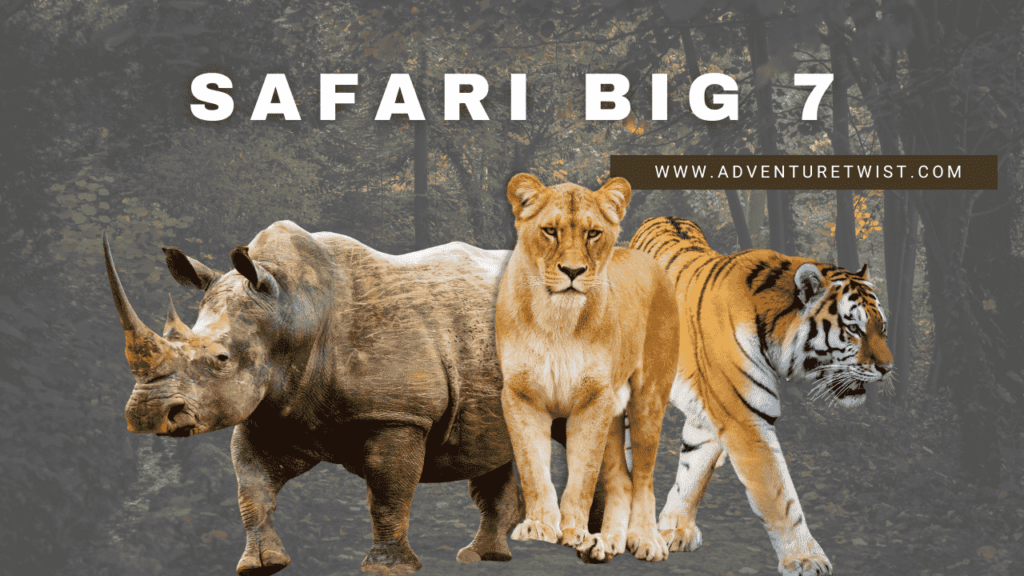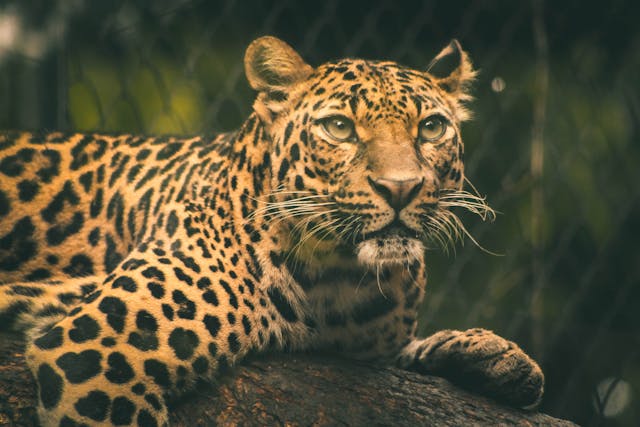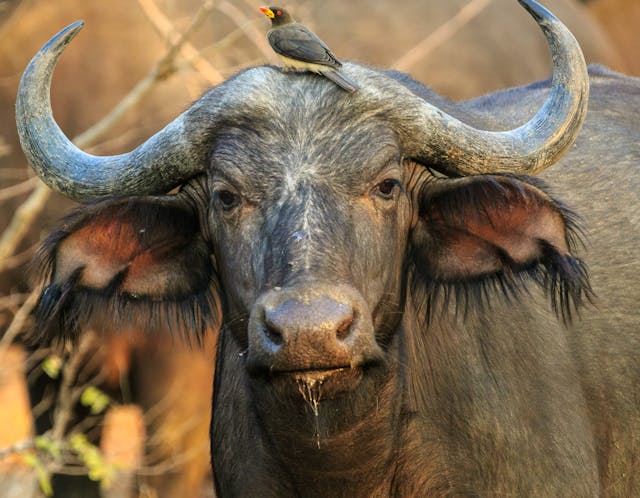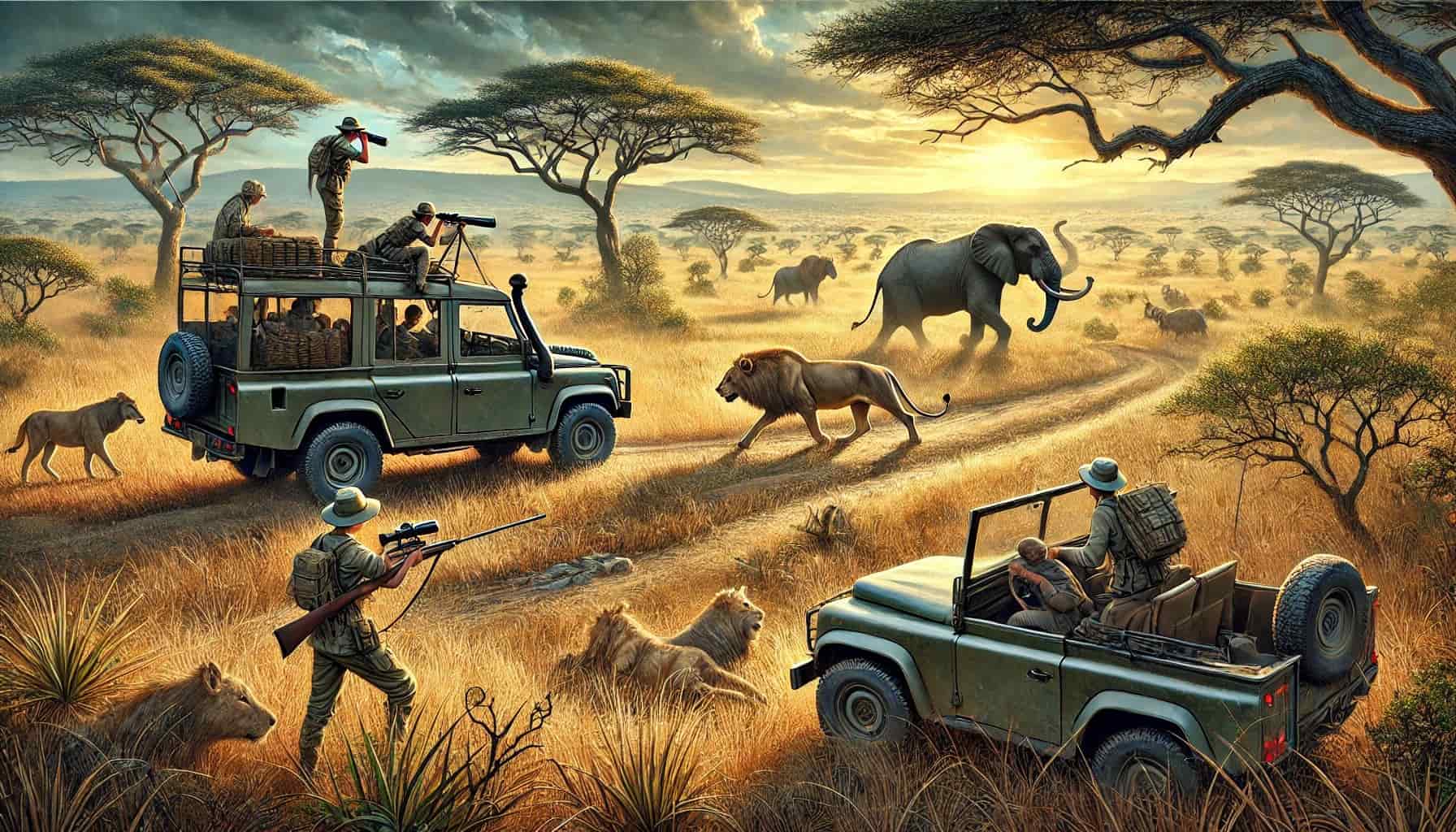
If you’ve been on an African safari, then you must have met or heard about the Safari Big 5, which includes the lion, leopard, rhinoceros, elephant, and Cape buffalo. But with the Safari Big 5, comes the Big 7, with the addition of Cheetah and African wild dogs.
We would be exploring these creatures and how best they have served safari enthusiasts and the broader wildlife ecosystem. After reading, you wouldn’t wonder what the safari Big 7 is.
The Safari Big 7
The word “The Safari Big 7” refers to the list of seven animals that have become highly sought after in the range of safari tours and trips. A long time ago, in the past, the Lion, Elephant, Rhino, Buffalo, and Leopard were very difficult animals to hunt on foot. The hunters realized this, agreed, and tagged them the Big 5.
Fast forward to the present, tour marketers embraced the name to elicit and attract wildlife enthusiasts to explore these games, by visiting them in an organized bush setting. Now, you can find more listings of ‘Big’, including Big 7, Big 9, and Big 12, and some other new numbers that may emerge.
So, the Safari Big 7, is the Big 5 animals plus two other unique species that make for a complete safari sighting- the fastest land mammal, Cheetah, and the interesting hunter’s foe, wild dogs.
So, calling them the Big 7 is a concept that distinguishes it from the other safari game terminologies like the Dangerous 7, little 5, special 5, and the others.
RECOMMENDED: Cons and Risks of an African Safari
Significance of the Safari Big 7
It’s obvious there would have been reserves and conservation parks to help preserve our wildlife treasures, but hadn’t it been for an adventure feature called ‘safari’, major conservation developments would have been left untouched. Thanks to pioneers and frontiers of African safari wildlife tours.
Safari Big 7 is a major contributor to the increasing demand of tourists tripling in from different destinations to visit nature’s gift to mankind. The fact is, safari Big 7 has kept many things going for the global ecosystem. Below are the significance of Safari Big 7
Wildlife Conservation
Generally, wildlife, including all of the safari Big 7 animals, are at different degrees of threat from poaching, loss of natural habitat, and human-wildlife conflict. But the strong brand of the Big 7, has drawn attention to conservation contributions at different levels. These contributions spur several initiatives that have protected the animals and the broader ecosystems they inhabit.
Economic Impact
African countries blessed with these wildlife treasures are benefiting from safari tourism. The Big 7 attracts safari lovers to come to see these creatures in their natural habitat honourably, providing significant revenue for the host countries. African countries like Tanzania, Botswana, South Africa, Uganda, Kenya, and Zimbabwe have emerged globally due to safari tourism.
Difference between Big 5 and Big 7







What most adventurists seek on an African safari is seeing the Big 5. This is the reason why they can visit two to three parks to witness all five(5). However, the difference between the Big 5 and Big 7 is the two animals that were added to improve significance, African iconography, and safety from extinction.
The Incredible Cheetah
The Cheetah is famous for its incredible speed and is currently the fastest land animal. It is a solitary animal and the last of the three big cat species in Africa. Although it is not an endangered species yet it’s vulnerable to hunting and land development practices. Cheetahs use their natural camouflage feature to hunt for food, and they love vantage spots to aid their hunting.
African Ruthless Wild Dog
These are rather funny-looking creatures that resemble the usual domestic dog. They have painted patched skin and love moving in parks. They are also known as hunting dogs and seem to be at war with local farmers because of their ruthless hunting style, eating animals alive and leaving them to die slowly. Shadows of Africa describes these two animals distinctively.
Why the Big 7 Matters on Safari
I don’t think much of a safari without the sight of the jungle king or the majestic size of adult elephants. This is not the same for everyone but any first-timer witnessing the Big 7 will enjoy an unforgettable experience.
Safari Big 7 matters due to animals’ unique nature and elusiveness; something tourists look forward to, that enhances the whole safari experience. The interesting behaviour of each animal exudes sheer pleasure as tourists take their guided tours or observe them from the game rides. The Big 7 adds a thrilling blend to your adventure.
Today’s world of technology has seen the enhancement of photography, particularly in nature. Even with the presence of AI, taking pictures of a Lion in its natural habitat is valuable at this time. So just as tourists flock down to explore wildlife games, their cameras are more than ready to take shots of the Big 7.
As tourists come and go, there is widespread conservation awareness and what they can do to contribute. Print Across Africa, an online travel resource reports on the positive impact of safari tours on conservation.
Best Safari Destinations to Spot the Big 7
There are several safari destinations with unique wildlife experiences, but when it’s spotting the Big 7, you want to be sure where you are headed.
Serengeti National Park in Tanzania is a wholesome center for all sorts of games especially the Big Five and the Cheetah. The Maasai Mara in Kenya also is a haven of African wildlife treasures., where you get to see the distinctive-looking African wild dogs.
Other best safari destinations to spot the big 7 include Ngorongoro Crater in Tanzania. Lake Nakuru National Park Nairobi National Park in Kenya, Queen Elizabeth National Park in Uganda, and Akagera National Park in Rwanda.
It is important to note that each park may not possess all of the animals as one or two may be missing
RECOMMENDED: Top Safest African Countries For Safari
Safari Tips for Spotting the Big 7
Since there are top tips for spotting the big 7, it is better to be prepared before going to visit their habitat in Masai Mara, Kenya, or the Ngorongoro Crater in Tanzania. Remember it’s one thing to go for a safari and another thing to spot your desired animals.
Below are the basic rules to guide you
- They are most active in the early morning and late afternoon.
- Go during the height of the safari season
- Remember to use Binoculars
- Watch for watering points and stop to observe.
- Be attentive to alarm calls, like that of the antelopes, whose predator, one of the Big 7 may still be around.
Choosing the Right Tour Operator
One great safari resource any traveller will vouch for is the right tour operator. A skilled operator is not just knowledgeable but experienced to guide tourists and provide necessary information that will assist in spotting the Big 7
Choosing the Optimal safari times (dawn and dusk)
On a safari, it is easy to spot games in the early times of the morning before the sun sets as heat withdraws them to take cover. Lions, for instance, become active again 60 minutes before dusk. Looking from experience, the best time to view the Safari Big 7 is at dawn and dusk.
RECOMMENDED: The Best month to go on an African Safari
Essential Gear and Preparations
African Bush camp writes that the right gear can make all the difference on a safari. Without the right gear, one may be restrained from enjoying activities like walking safari or going out on the jeep with others. This is the essence of knowing what not to wear on a safari.
Also, adequate preparations will optimize the opportunity to find these wildlife in their relaxed moments. When your itinerary involves a night tour, you already have yourself fixed so as not to delay the tour operator or sabotage the experience.
Conservation Efforts for the Big 7
Dr. Amy Dickson, a safari hunter explains that the word “conservation” is often misunderstood. This statement, from Conservation Frontiers reveals a report on Safari hunting, conservation, and sustainability.
According to Dickson,
conservation stands for a host of activities relating to habitats and wildlife but ultimately, is the sustainable and wise use of nature for the benefit of present and future generations
With this definition, anyone can have a better understanding and appreciate the efforts towards wildlife preservation
To prevent poaching, habitat loss, and human-wildlife conflict, certain programs and initiatives are being held in different locations to help resolve wildlife issues and curb declining wilderness ecosystems.
Some of these initiatives include:
- Promoting Wildlife/ Eco-tourism in several African destinations
- Policy Advocacy
- National Parks and Game Reserve Management Areas.
- Science and Research
- Community engagement and wildlife protection
To learn more about African conservation efforts, visit destinationsafrica.com
Pros and Cons of Focusing on the Big 7
Safari Big 7 offers exciting opportunities for tourists. Unfortunately, there are some drawbacks. Below are areas in which focusing on the Big 7 benefits us and poses threats.
Pros of Focusing on Safari Big 7 for Travelers
Fulfill Expectations
Individuals know what they want on a safari trip. By focusing on the Big 7, one gets a rewarding escape from the usual everyday routine. It is expected that If a safari is a long time event, then it should fulfil individual expectations.
Bucket List Experience
An African safari is a worthy venture where wildlife enthusiasts can’t wait to see their bucket list of iconic games in their natural habitat. Focusing on the Big 7 is a quick means to fulfilling these bucket list plans.
Contribution to Conservation
As more tourists take safari seriously, it is a plus for the conservation and sustainability of African bushes. So, it’s not just about travellers enjoying themselves but contributing to conservation causes.
Potential Drawbacks and Considerations
Safari Big 7 Safari is Expensive
What is the cost of an African safari? Truth be told, safaris can be expensive. The cost of running itineraries and transportation to and fro may not be available, particularly when focusing on seeing the Big 7.
RECOMMENDED: Why Tanzania Safaris Are Expensive
Time is also a crucial factor for a memorable safari. Travelers need 2-3 nights to accommodate seeing all seven animals in a trip, and because time is limited, it may not be visible for some tourists.
Safari lovers are increasingly attracted to the Big 7 which results in crowded spots at popular safari destinations. This can ultimately diminish the safari experience.
We hope this blog post has provided you with a clearer understanding of the Safari Big 7. For more insightful articles and tips on African safaris, be sure to visit our African Category.



0 Comments